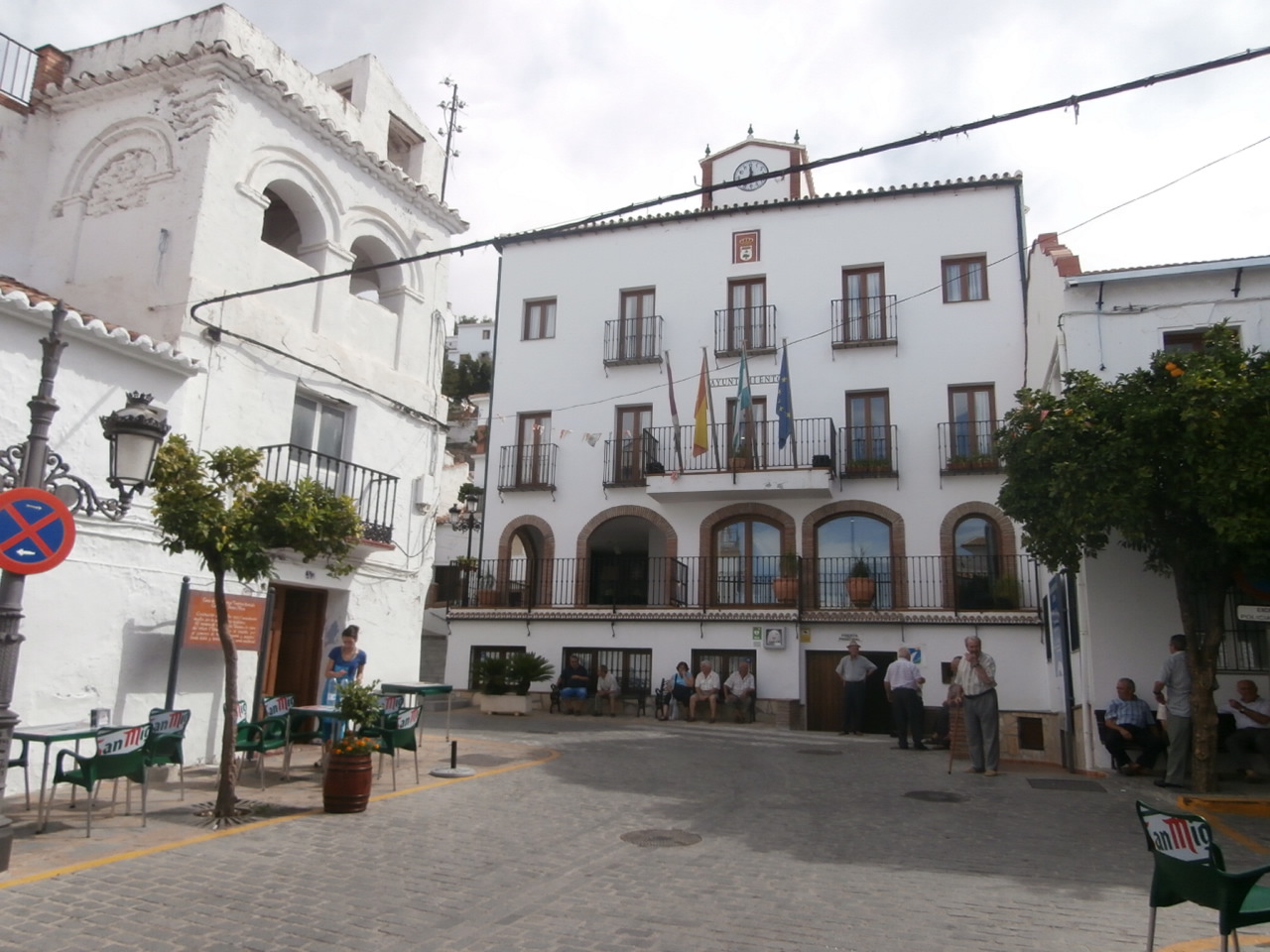
Canillas de Aceituno is situated 17 km from its capital, Vélez-Málaga, in the north east of the region at an altitude of 650 metres above sea level. There are three ways of reaching the village. From Arenas and then turning left before Archez, Algarrobo then turn left for Archez and right for Salares and carry on or the way I find easiest is to turn right off the road leading from Vélez-Málaga to Viñuela ( A-335 )and it’s just a 10 km road up to the village. As you drive up you can see Canillas nestled amongst the slopes of the Sierra de Tejeda and the great Maroma (the roof of Malaga) with its peak at 2,065 metres. The landscape here is absolutely spectacular in all weather. On a bright, clear sunny day you can see both the reservoir at Viñuela and the sea sparkling below you but on a dark cloudy day with mist settling on the mountain tops the scenery becomes mysterious and the hills seem to whisper the secrets of their traumatic past when both Phoenicians and Romans passed through this way long before the Arabic era, the Moorish rebellion and Franco. A question so many people ask about these mountain pueblos is why, when there were no roads, did people build in such high, remote spots? There are many reasons but probably the main one being water! Here in this area for example, people come from far and wide for the healing powers of the natural mountain spring water which is said to prevent illness.
The name Canillas de Aceituno is said to have its origins from the Arabic azzeitun, meaning oil, but then on further investigation I discovered the name comes from the Latin Canillae, meaning zone of cane plantations! Plus the Arab word Azeytuni for woven and dyed silks. Under Christian rule the silk trade thrived here and the cloth was exported from Granada. Rather a shame that the offices for controlling this trade, The House of Tithes, which today is uninhabited, became in the 20th century a tavern and almond warehouse The silk trade seemingly more romantic and prosperous.
Today you can easily miss the village itself as there is now a bypass below which leads directly to the outdoor, municipal swimming pool, but if you continue into the village and find a parking space you can wander through the narrow streets and discover its charm. The impressive 16th century Church of Nuestra Señora del Rosario, a Gothic-Mudejar style building, looms up amidst the houses and the Town Hall in the Plaza de la Constitución stands proudlynext to the Casa de los Diezmos (House of Tithes). There are many bars and restaurants serving delicious local cuisine and in springtime there is a chance to eat your way through thousands of kilos of black pudding during the Dia de la Morcilla!